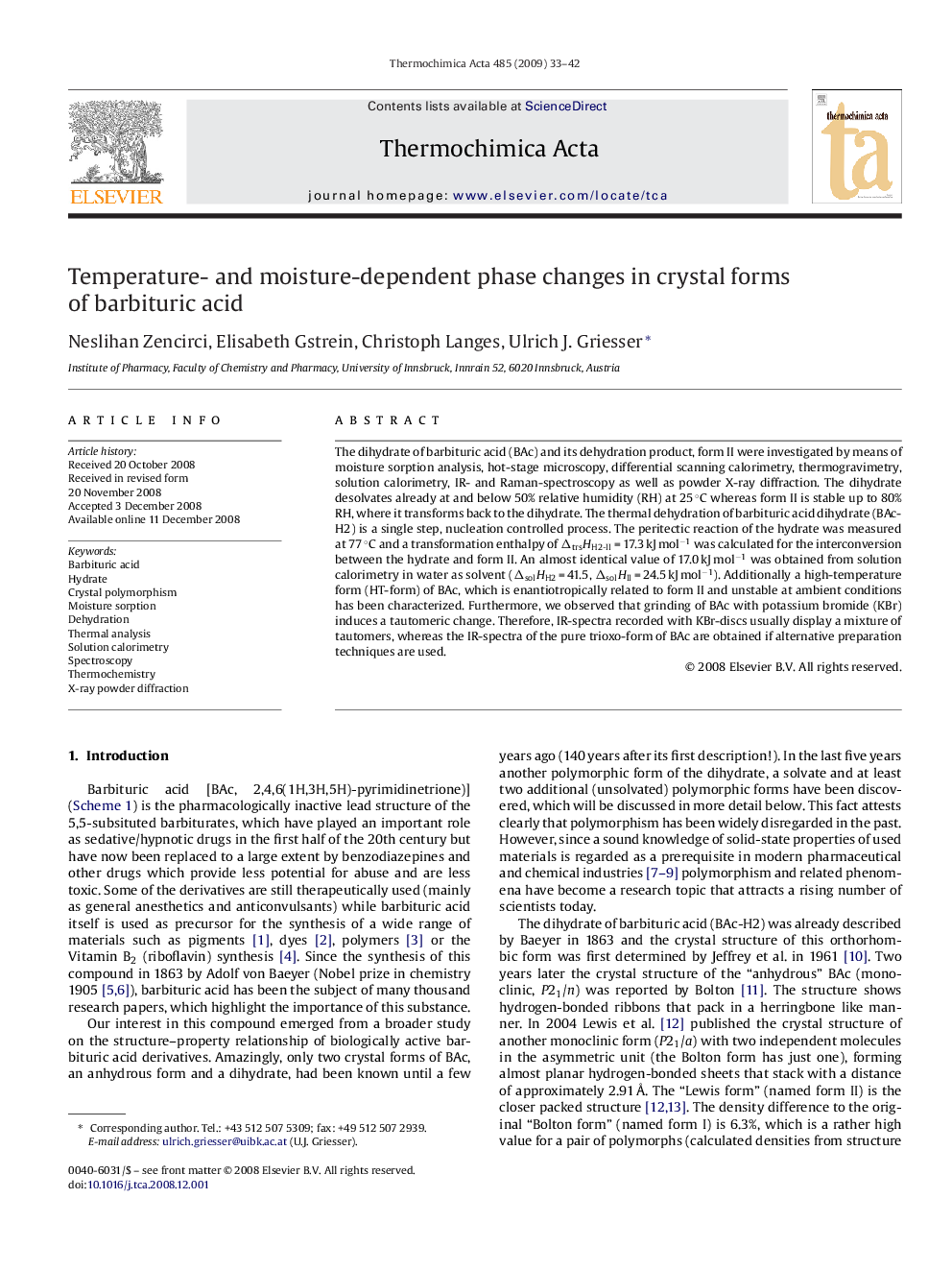| Article ID | Journal | Published Year | Pages | File Type |
|---|---|---|---|---|
| 675388 | Thermochimica Acta | 2009 | 10 Pages |
Abstract
The dihydrate of barbituric acid (BAc) and its dehydration product, form II were investigated by means of moisture sorption analysis, hot-stage microscopy, differential scanning calorimetry, thermogravimetry, solution calorimetry, IR- and Raman-spectroscopy as well as powder X-ray diffraction. The dihydrate desolvates already at and below 50% relative humidity (RH) at 25 °C whereas form II is stable up to 80% RH, where it transforms back to the dihydrate. The thermal dehydration of barbituric acid dihydrate (BAc-H2) is a single step, nucleation controlled process. The peritectic reaction of the hydrate was measured at 77 °C and a transformation enthalpy of ÎtrsHH2-II = 17.3 kJ molâ1 was calculated for the interconversion between the hydrate and form II. An almost identical value of 17.0 kJ molâ1 was obtained from solution calorimetry in water as solvent (ÎsolHH2 = 41.5, ÎsolHII = 24.5 kJ molâ1). Additionally a high-temperature form (HT-form) of BAc, which is enantiotropically related to form II and unstable at ambient conditions has been characterized. Furthermore, we observed that grinding of BAc with potassium bromide (KBr) induces a tautomeric change. Therefore, IR-spectra recorded with KBr-discs usually display a mixture of tautomers, whereas the IR-spectra of the pure trioxo-form of BAc are obtained if alternative preparation techniques are used.
Keywords
Related Topics
Physical Sciences and Engineering
Chemical Engineering
Fluid Flow and Transfer Processes
Authors
Neslihan Zencirci, Elisabeth Gstrein, Christoph Langes, Ulrich J. Griesser,
